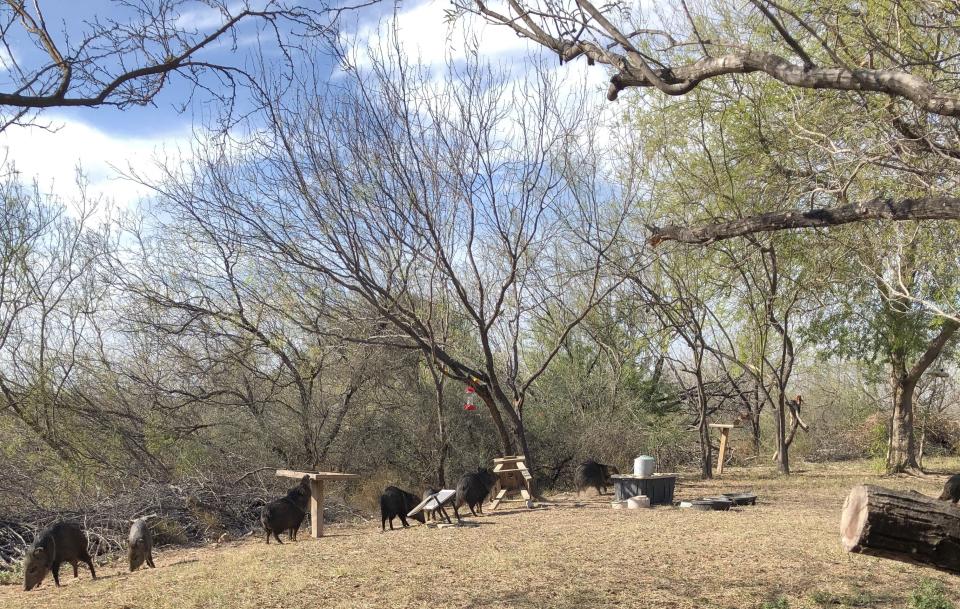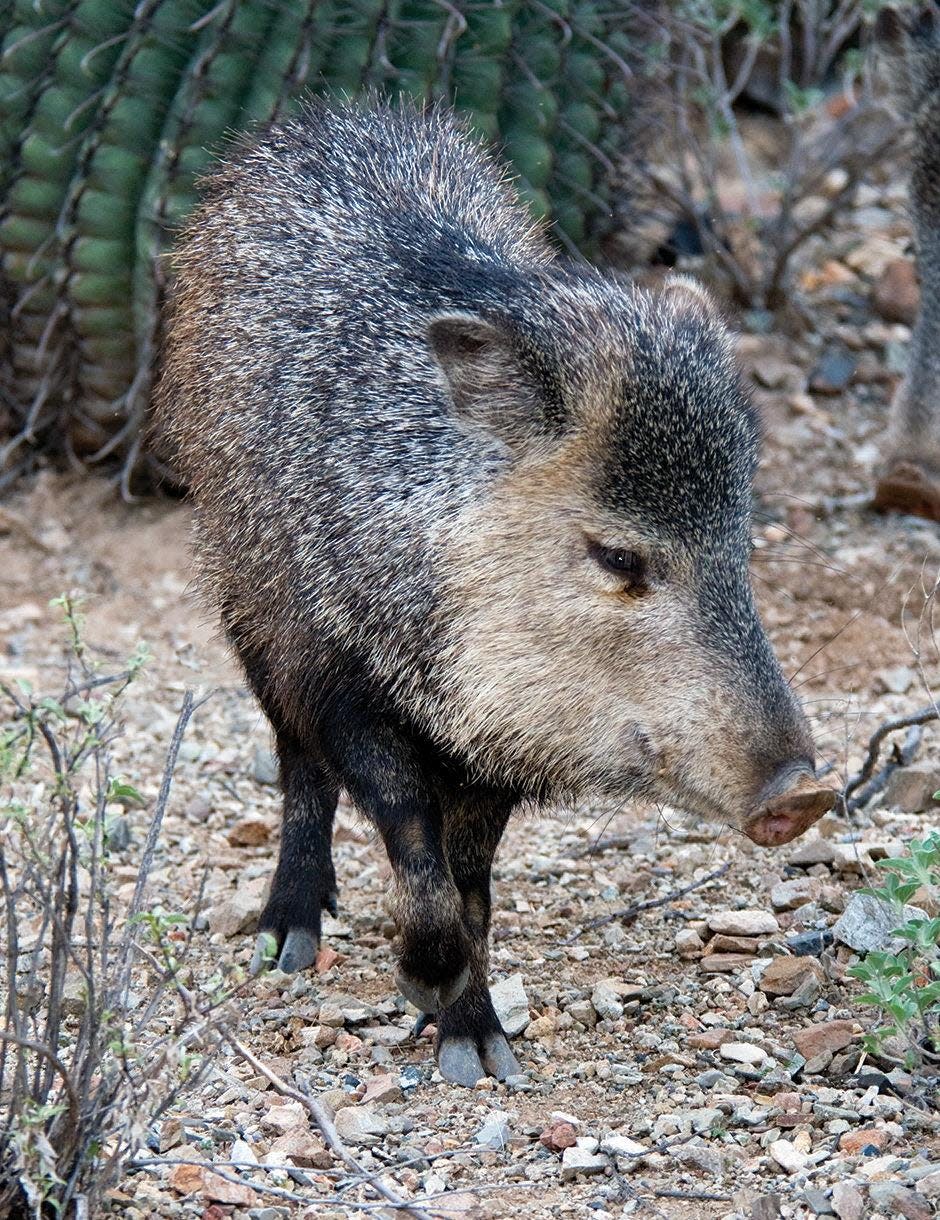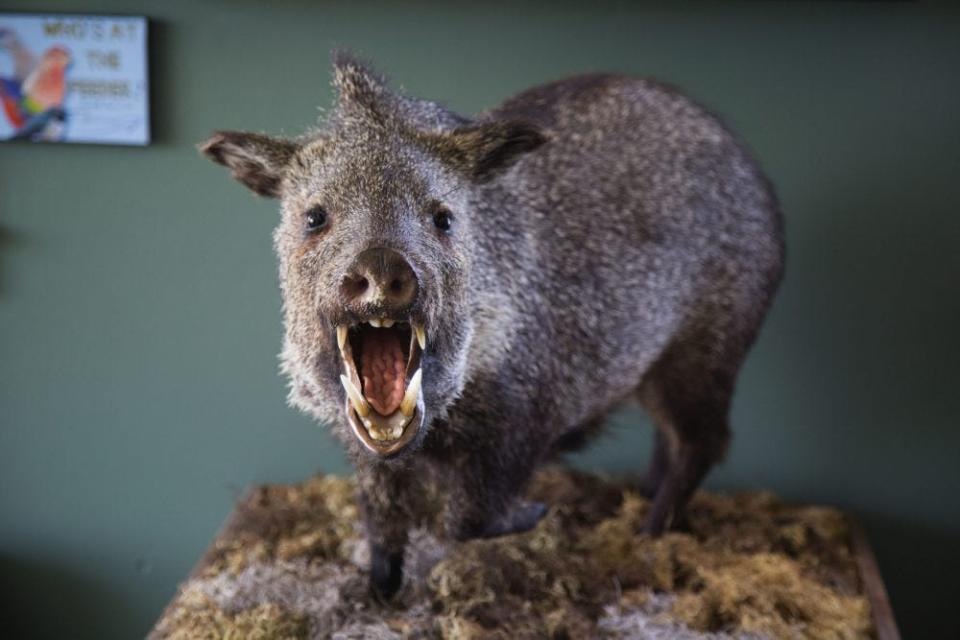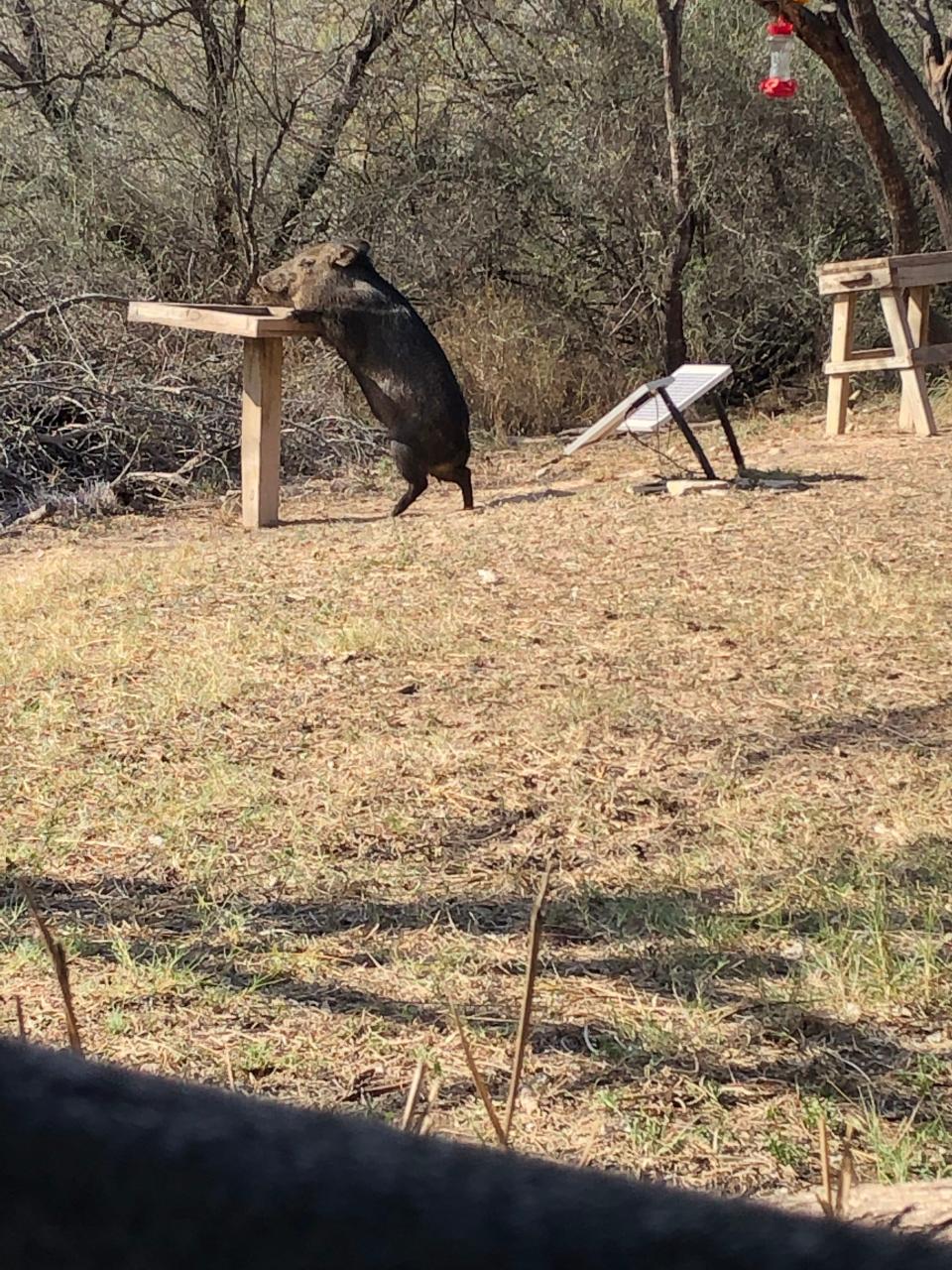The Collared Peccary: A Case Of Mistaken Identity
Have you ever heard the expression “If it looks like a duck, walks like a duck, and quacks like a duck, then it just may be a duck?" Although this saying has some truth to it, we should also remember that "appearances can often be deceiving." A good example of both expressions is found in our North Central Texas and Southwestern Oklahoma area. This is the secretive and unobtrusive Collared Peccary, also called the Javelina.


At first sight, the collared peccary may look simply like an odd small pig. However, to refer to a peccary as a “pig” is doing them a great injustice. Domestic and feral pigs (often referred to as wild boars or razorbacks) were originally found in Asia, Africa, Europe and other parts of the Old World and were subsequently imported/introduced to the New World (Americas). Peccaries, on the other hand, occur exclusively in the New World.

Peccaries and pigs both have distinctive snouts and body shapes with overly large heads and shoulders. However, adult collared peccaries are much smaller than adult feral pigs at just 50 pounds on average, compared with feral pigs at 300-400 pounds. Peccaries are gray to black in color with a lighter, white band (the collar) extending from the top of the shoulders down and around the bottom of the neck/throat region.
Both pigs and peccaries are classified as artiodactyles (having two functional toes or hooves on each foot); however, counting their dewclaws, pigs have four toes on each foot whereas peccaries have four toes on their front feet but only three on their hind feet. The large, distinctive tusks of pigs grow outward and backward as they age; whereas, the tusks of peccaries grow straight up-and-down and cannot be seen when the mouth is closed. Pigs have longer, tufted tails compared to collared peccaries' short, indistinct tails. Peccaries also have a ridge of course, longer hairs extending from behind the head to their tail.

Collared peccaries once roamed through the southern and eastern counties of North Central Texas but, more recently, are rarely reported in some of those counties. However, peccaries have been reintroduced to our eastern counties and hunting is regulated in North Central Texas and a few counties of Southwestern Oklahoma. Peccaries occur in brushy areas and wooded, somewhat open pasturelands and are often seen frequenting riparian habitats close to streams and rivers. Collared peccaries survive quite well in upland, arid habitats if there is sufficient succulent vegetation and/or prickly pear cacti (one of their favorite foods) are available.
Unlike feral pigs, the Collared Peccary is not a rooting and digging species but, instead, simply pushes around the soil surface with its nose to locate its preferred food items; thus causing no (or very little) damage to the habitat/environment. Foraging activities vary depending upon season; but collared peccaries tend to be most active during the later afternoon and evening hours. On several occasions, I observed a small herd/band of peccaries in Laredo as they emerged from brush cover in late afternoons with the goal of raiding several bird feeding stations along a nature trail and consuming the bird seed and citrus fruits placed for avian visitors! Also, contrary to tales of the peccary’s potentially aggressive behavior, as I would stand and step out from the wildlife blind, the peccaries would “sound the alarm” with a rapid series of grunts, raise the hair of their manes (evidently to appear larger to the/a potential predator), but then turn around and quickly retreat into the brush and trees. However, during another encounter with a collared peccary in the Big Bend region of Texas, the animal perceived itself to be surrounded and trapped (after first running into heavy brush cover) and I could hear the peccary “popping its teeth” as a warning signal. I have no doubt that, if necessary, it would have defended itself. Herds of collared peccaries will also form a defensive circle around the youngest individuals of the band. Natural predators of collared peccaries (particularly the young) include coyotes, bobcats, and mountain lions.
Collared peccaries can reproduce throughout the year with litters ranging from one to five, but twins are common. In contrast, feral pigs usually produce litters of four to six piglets.
Where feral pigs and collared peccaries co-occur, the two species partition resources. Peccaries eat more prickly pear cacti in all seasons, different forbs, and fewer grasses than wild swine. However, because of the feral pigs’ abilities to switch resources as conditions change, they compete with collared peccaries and other wildlife species. Conversely, collared peccaries may improve overgrazed pasturelands by reducing numbers of cacti and other weedy browse plants.
Therefore, considering all of these points, if you happen to see collared peccaries/javelina in your area, please don’t make the mistake of calling them “pigs!”
Jim Goetze is a retired professor of biology and former chairperson of the Natural Sciences Department of Laredo College with an avid interest in all aspects of the natural world. He can be contacted at gonorthtxnature@gmail.com
This article originally appeared on Wichita Falls Times Record News: The Collared Peccary: A Case Of Mistaken Identity

